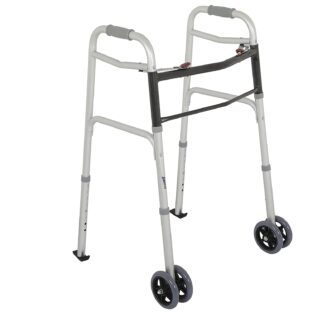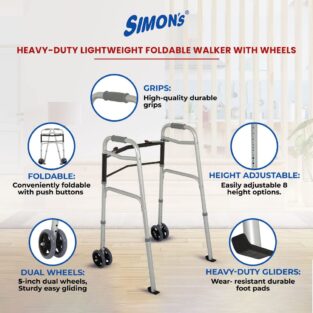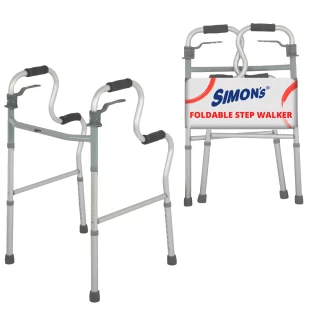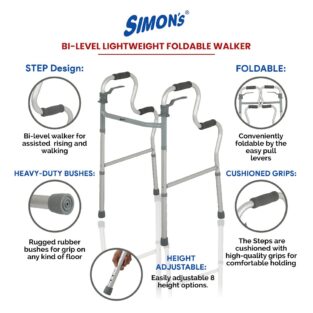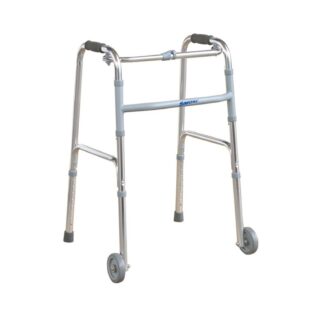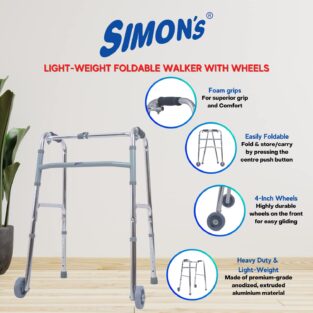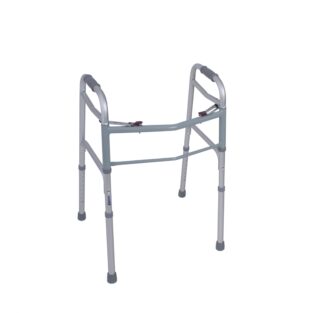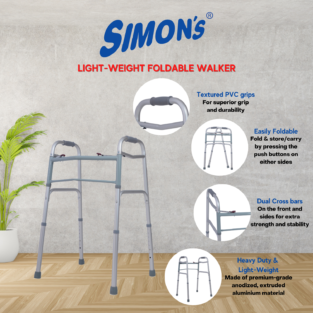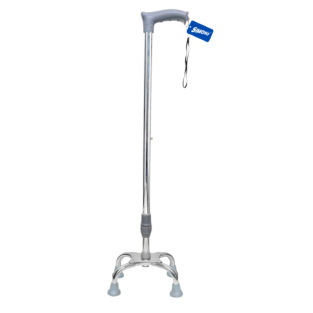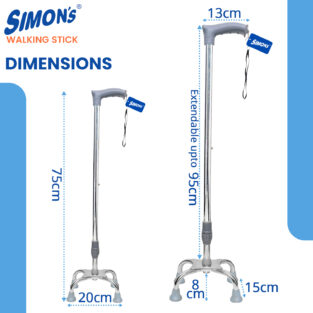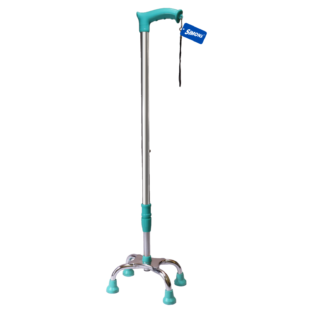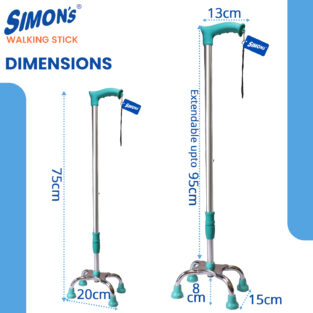- Empty cart.
- Continue Shopping
Walkers
Having four points of contact with the ground, a walker is a walking assistant. The side that faces the patient is typically open and has three sides in general. In order to stabilize individuals with poor balance, limited mobility, or lower extremity impairment, it is more frequently utilized than a walking stick since it offers a larger base of support. Ironically, using a walker or frame has been linked to a higher risk of falling in both community residents and people in residential care. Despite the association between using a device and falling, carers claim that mobility aids encourage independent mobility in people with disabilities, and users claim that they provide more opportunities for social engagement. Additionally, using a walker can raise metabolic and physical demands, thus advice and instruction are important.
Due to societal shame and peer pressure, particularly in minority groups, people may be reluctant to use walkers. Greater acceptance would result from having supportive peer role models, more physician participation, more aesthetically beautiful walkers, less expensive walkers, and user-friendly walkers.
varieties of walkers
A walker can help you move around more easily if you break a bone in your leg or foot or are at danger of falling. Consult your physician or physical therapist regarding the following choices:
- ordinary walker Four rubber-tipped, non-skid legs on this walker offer stability. To move, you must pick it up.
- Walker on two wheels. This walker is practical if you require some, but not continuous, weight-bearing assistance. It includes wheels on the two front legs.
- a tricycle walker. Similar to a four-wheel walker, this one supports balance but is lighter and easier to move.
- wheeled walker. People who don’t need to rely on the walker for balance should use this one.
- knee scooter. This walker resembles a foot-powered scooter but has a platform for your knee to rest on.
Walkers are mobility aids that provide support and stability to people who have difficulty walking or maintaining their balance. Walkers are made up of a lightweight metal frame with four legs and are designed to be used indoors or outdoors.
There are different types of walkers available, including:
- Standard walker: A standard walker is a basic walker that has four legs and no wheels. It is the most stable type of walker but requires more effort to move.
- Rolling walker: A rolling walker is a walker that has two wheels on the front legs, which makes it easier to maneuver. It provides more support than a cane but less than a standard walker.
- Knee walker: A knee walker, also known as a knee scooter, is a mobility aid that is used when one foot or ankle is injured. The user rests their injured leg on a padded platform and uses the other leg to push themselves forward. Knee walkers are designed to provide stability and support while allowing the user to maintain mobility.
Walkers can be height-adjustable to accommodate users of different heights, and some models come with accessories such as baskets and trays to carry personal items. It is important to choose a walker that is appropriate for your needs, and to ensure that the walker is adjusted and maintained properly to prevent accidents or injuries.
Additionally, it is important to receive proper training on how to use the walker, and to practice using it in a safe and controlled environment. This can help you to build confidence and use the walker more effectively.

